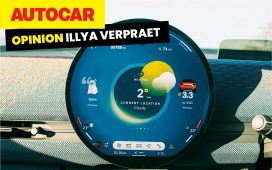We’re all quickly learning about the environmental benefits of electric vehicles. They’re more cost-efficient than traditional gas-guzzlers and can run on clean, renewable energy sources.
However, we commonly think of cars and overlook the seafaring variety of EVs. While it’s still a niche sector, there’s now a new contender on the water with Vessev’s VS-9 electric hydrofoil.
A press release shared by CleanTechnica introduces Vessev, a sustainable marine technology company that’s begun testing its new premium passenger transport in New Zealand with the help of the country’s largest ferry operator, Fullers360.
“We are in the earliest stage of a global transition to sustainable energy use. Our partnership with NetZero Maritime [part of Fullers360] is one of the most powerful in the world in accelerating the adoption of new technologies.” Eric Laakmann, Vessev CEO, shared in the release.
“There are 33 million vessels in the world today with sustainable vessels representing the smallest fraction. Through significant enhancements in efficiency, hydrofoiling will play a key role in this once-in-a-generation shift.”
The 30-foot VS-9 was designed to transport up to 10 passengers at up to 30 knots, with a range of about 57 miles per charge. When docked, the vessels can charge using a standard AC outlet, but support for DC fast charging is on the way.
The hydrofoil, which is like an underwater wing, provides an experience that feels “more like flying than sailing.” Since the design lifts the boat out of the water, it both provides a smoother ride and reduces surface drag, which makes it more energy efficient.
Dirty fuels used by international maritime vessels account for 3% of all planet-warming pollution, and the VS-9 is just part of the shift away from them for water transportation. Navier announced its own commercial electric hydrofoil at CES 2023, and BMW has a sporty offering of its own.
More sustainable marine biofuels can help reduce the environmental impact of traditional dirty fuels, and even ferries running on sustainably produced hydrogen have seen success in commercial applications.
There are financial savings here as well. “To put it into perspective, the VS-9 is undergoing on-water testing with a petrol-powered chase boat following, doing the same motions and distance. At the end of each day, the cost of the petrol fueling the chase boat is 25 times the cost of the electricity used to charge the VS-9,” Laakmann explained.
“The benefits of the VS-9 scale up to larger vessels.” he continued, giving away some of their future plans.
“We are already working to develop the VS-18, a 100-passenger vessel using the same technology and design of the VS-9, which will have additional seakeeping capability and unlock even more opportunities.”
Join our free newsletter for weekly updates on the coolest innovations improving our lives and saving our planet.











